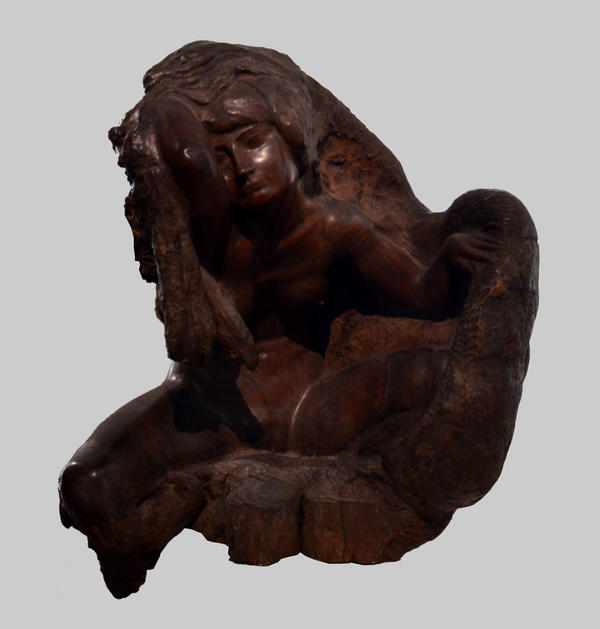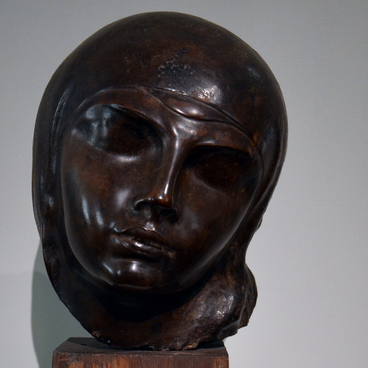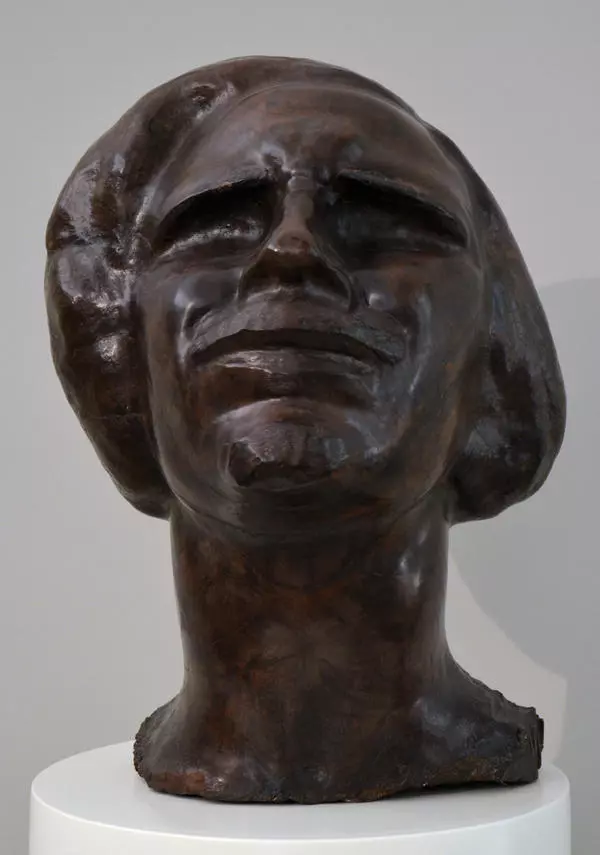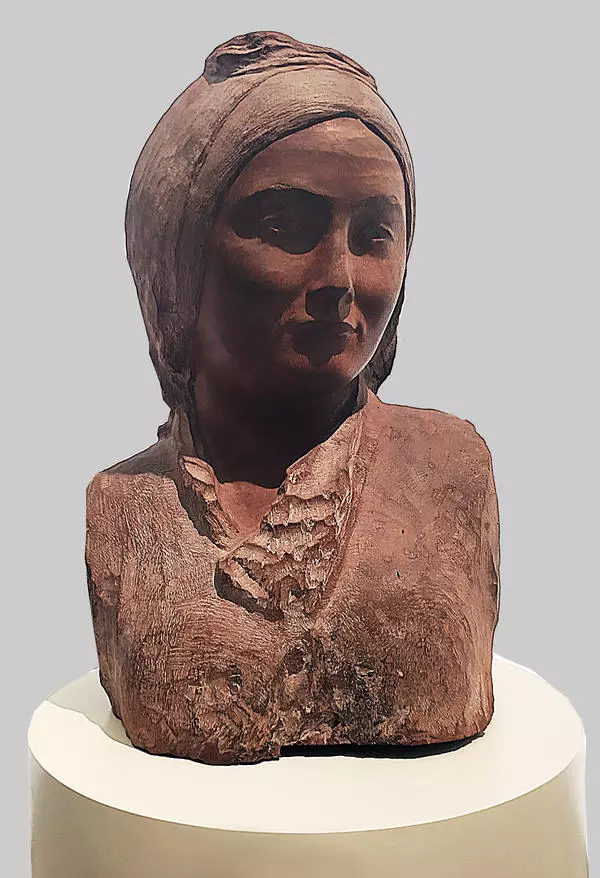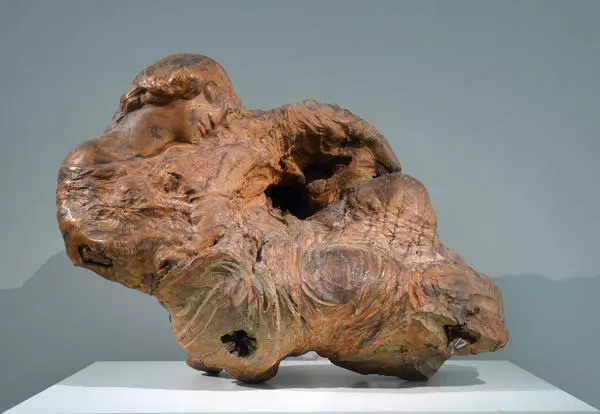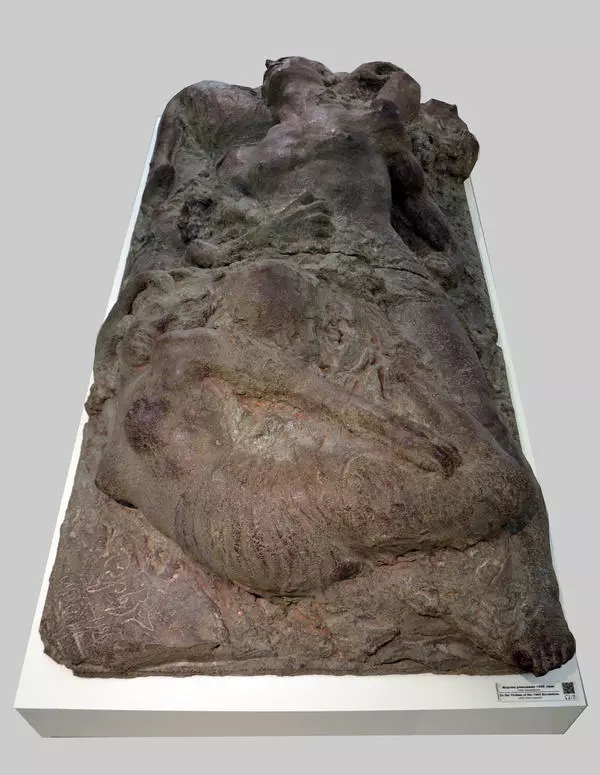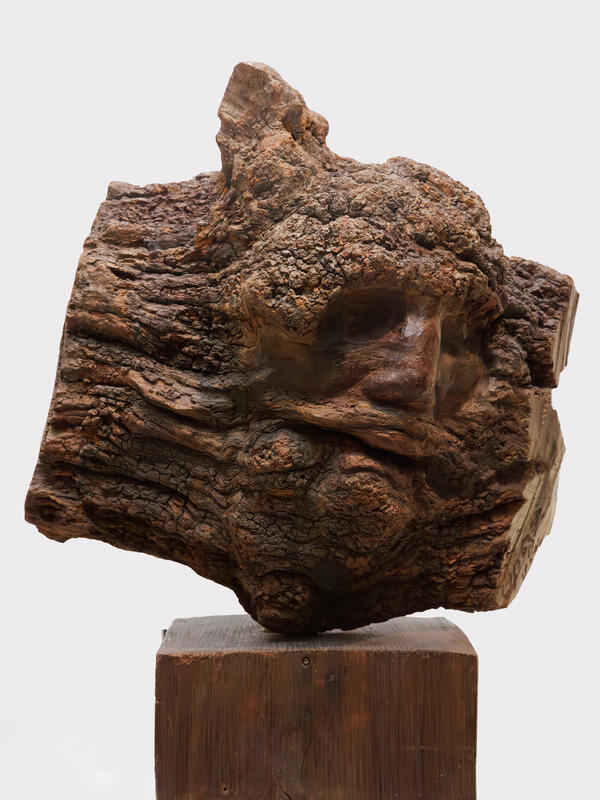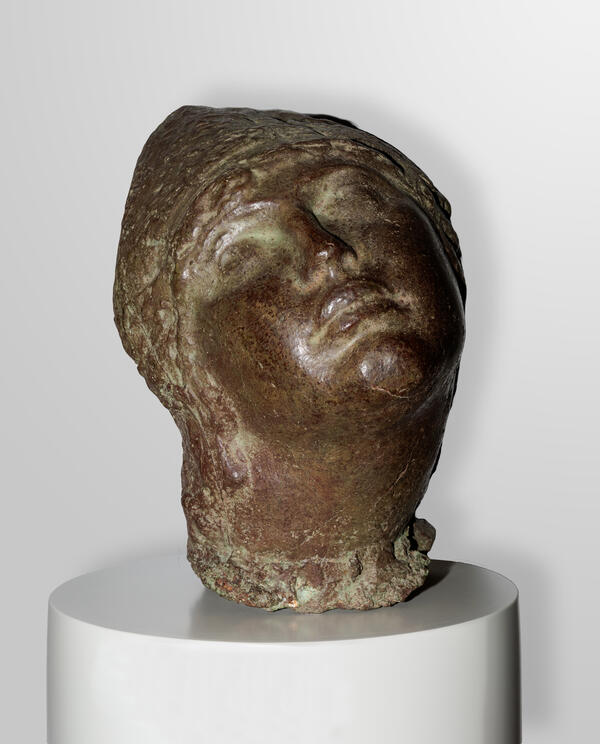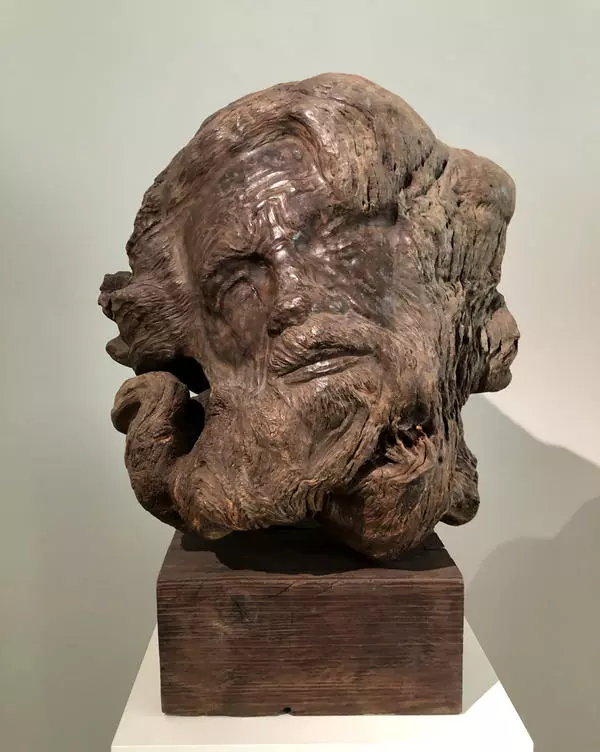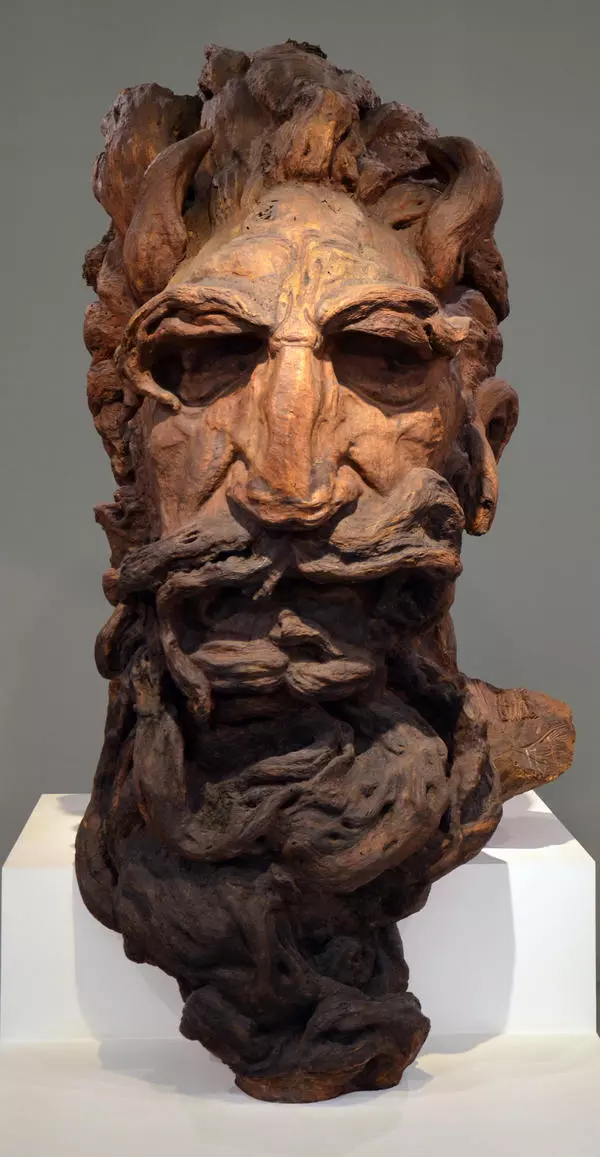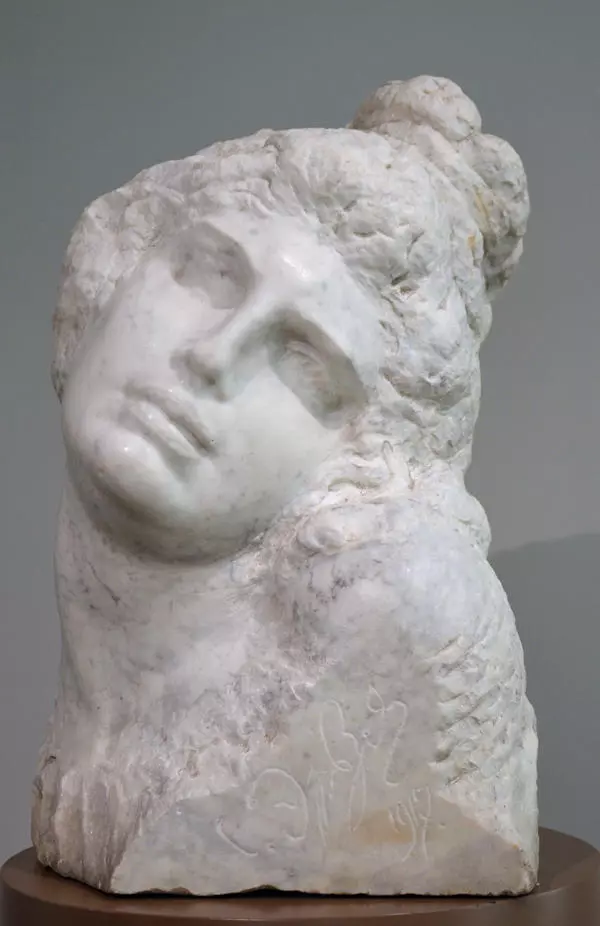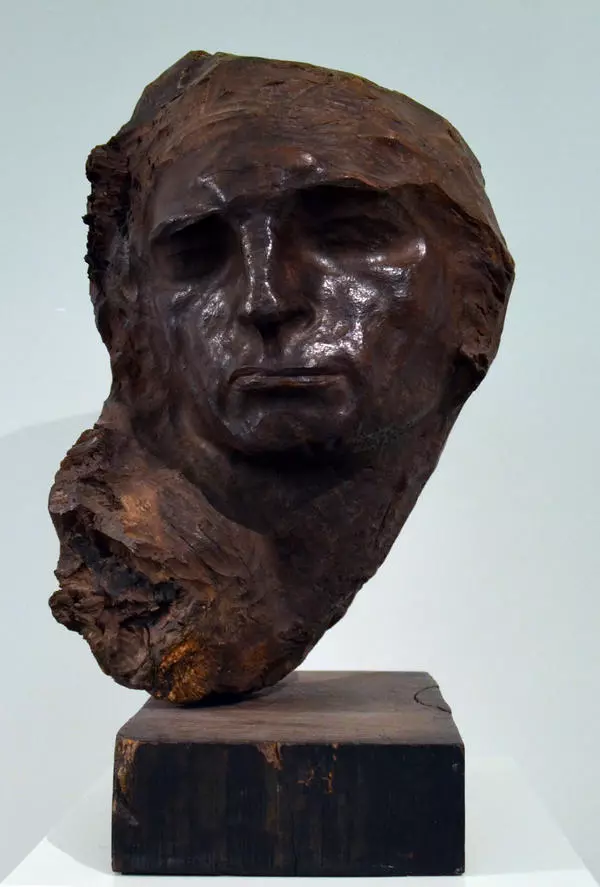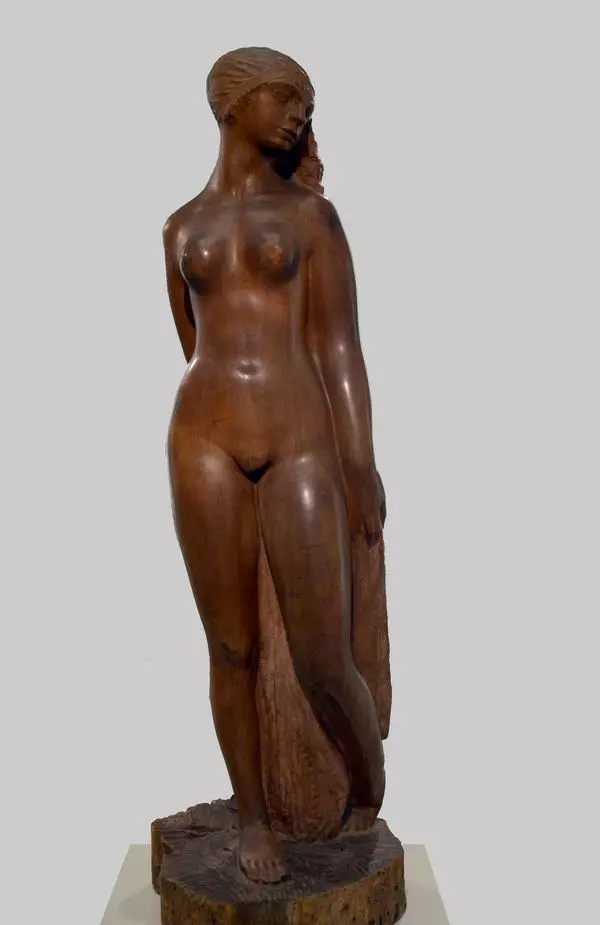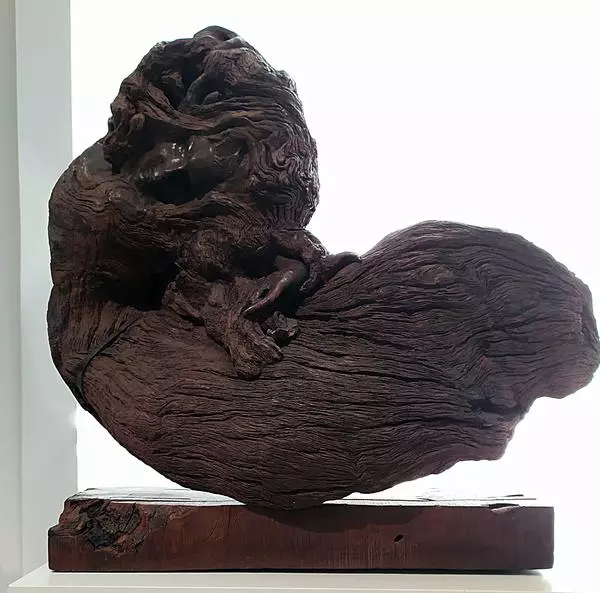More than once, Stepan Erzya turned to the ancient mythological story about Leda and the enamoured Zeus who turned into a swan in order to trick the beauty into favor. He came to Leda when she was bathing on the Evrot River and seduced her. From the union with the god, Elena the Beautiful appeared who subsequently unleashed the lengthy Troyan War.
The image of Leda loving Zeus in the guise of a swan has become part and parcel of the world art culture. Antique frescoes were dedicated to this plot; it inspired the Renaissance titans such as Leonardo da Vinci, Michelangelo Buonarroti, Antonio da Correggio, as well as masters of subsequent eras: Peter Rubens, Paul Cezanne, Henri Matisse, Salvador Dali. Artists loved this plot for the opportunity to portray the beauty of a female naked body and to convey the feelings of love. Following suit, Stepan Erzya created two works of the same name, telling about the love story of the Greek god and an earthly woman. He gave an unorthodox, deeply personal interpretation to the traditional images and entered into a kind of dialogue with his great predecessors.
Erzya carved his first image of Leda and the Swan from walnut in 1922 during his stay in the Caucasus. The artwork depicts the scene of a touching date between a woman and a swan, with the bird’s image dominating in the composition with its peculiar plasticity. The image of the fragile Leda almost hidden under the swan’s wings plays a subordinate role. Here, the plot comes to the foreground, not the psychological experiences of the characters.
The myth of Leda and the Swan possessed the sculptor for another seven years. Stepan Erzya interpreted the sensual mythological plot for the second time in Argentina, when he made a sculpture from red kebracho in 1929. Here the scene of Leda’s encounter with the swan embodies earthly love and the beauty of the human body. The female image became paramount. Leda’s young and strong body is perfect, and the silhouette of her elegant hands and chiseled knees is smooth. Her stare is vacant; she is immersed in her feelings. The swan plays a purely plastic role: the elasticity of the flexible neck and the strength of the powerful wings are perfectly conveyed, but the bird remains behind Leda’s figure, framing it and emphasizing the woman’s beauty.
Stepan Erzya, without resorting to the interpretations of other masters, created an original sculptural composition primarily depicting not the eroticism of the mythological plot, but the triumph of the vital force uniting the feminine and masculine principles.
The image of Leda loving Zeus in the guise of a swan has become part and parcel of the world art culture. Antique frescoes were dedicated to this plot; it inspired the Renaissance titans such as Leonardo da Vinci, Michelangelo Buonarroti, Antonio da Correggio, as well as masters of subsequent eras: Peter Rubens, Paul Cezanne, Henri Matisse, Salvador Dali. Artists loved this plot for the opportunity to portray the beauty of a female naked body and to convey the feelings of love. Following suit, Stepan Erzya created two works of the same name, telling about the love story of the Greek god and an earthly woman. He gave an unorthodox, deeply personal interpretation to the traditional images and entered into a kind of dialogue with his great predecessors.
Erzya carved his first image of Leda and the Swan from walnut in 1922 during his stay in the Caucasus. The artwork depicts the scene of a touching date between a woman and a swan, with the bird’s image dominating in the composition with its peculiar plasticity. The image of the fragile Leda almost hidden under the swan’s wings plays a subordinate role. Here, the plot comes to the foreground, not the psychological experiences of the characters.
The myth of Leda and the Swan possessed the sculptor for another seven years. Stepan Erzya interpreted the sensual mythological plot for the second time in Argentina, when he made a sculpture from red kebracho in 1929. Here the scene of Leda’s encounter with the swan embodies earthly love and the beauty of the human body. The female image became paramount. Leda’s young and strong body is perfect, and the silhouette of her elegant hands and chiseled knees is smooth. Her stare is vacant; she is immersed in her feelings. The swan plays a purely plastic role: the elasticity of the flexible neck and the strength of the powerful wings are perfectly conveyed, but the bird remains behind Leda’s figure, framing it and emphasizing the woman’s beauty.
Stepan Erzya, without resorting to the interpretations of other masters, created an original sculptural composition primarily depicting not the eroticism of the mythological plot, but the triumph of the vital force uniting the feminine and masculine principles.

